Uterine Fibroids
How to submit an article:
- Registered users can submit any published journal article that has a unique DOI (Digital Object Identifier) name or link to Research Hub.
- For example, you can paste the full DOI link:
https://doi.org/10.1109/5.771073or just the DOI name:10.1109/5.771073into the field above and click submit. - The person who is first to submit a valid article to Research Hub will forever be credited for it, and every article submission earns you +6 Research Points.
Published research studies are articles that present the findings of original research that has undergone a peer-review process and has been made publicly available in scholarly journals, books or other media.
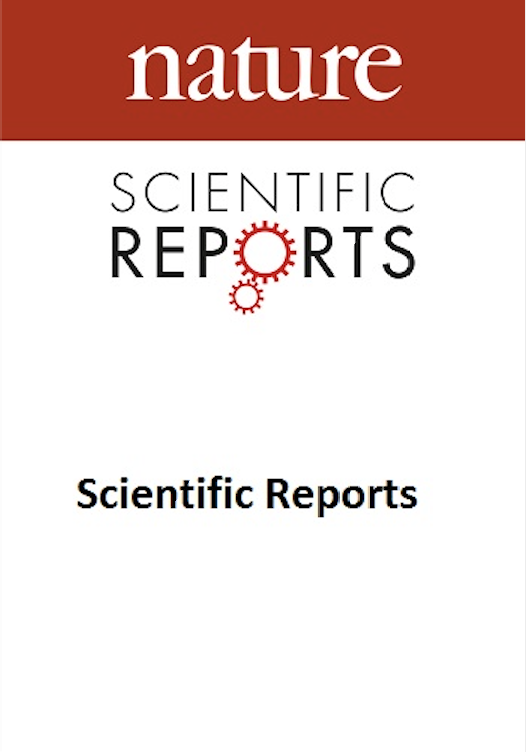
Targeting fibrotic signaling pathways by EGCG as a therapeutic strategy for uterine fibroids
2023 May 25 Scientific Reports Islam MS, Parish M, Brennan JT, Winer BL, Segars JH
We observed that EGCG displayed greater efficacy than ICG-001 (β-catenin), SP600125 (JNK) and MK-2206 (AKT) inhibitors, and its effects were equivalent to verteporfin (YAP) or SB525334 (Smad) for regulating expression of key fibrotic mediators. These data indicate that EGCG exhibits anti-fibrotic effects in fibroid cells. These results provide insight into mechanisms behind the observed clinical efficacy of EGCG against uterine fibroids.
Network Pharmacology Uterine Fibroids
Green Tea and Benign Gynecologic Disorders: A New Trick for An Old Beverage?
2023 Mar 16 Nutrients Hazimeh D, Massoud G, Parish M, Singh B, Segars J, Islam MS
Review Article Green Tea Period PainGreen tea helps alleviate symptoms in multiple benign gynecological disorders, primarily due to a compound called Epigallocatechin-3-gallate.

Assessing the Hepatic Safety of Epigallocatechin Gallate (EGCG) in Reproductive-Aged Women
2023 Jan 09 Nutrients Siblini H, Al-Hendy A, Segars J, González F, Taylor HS, Singh B, et al.
Cohort Study EGCG Green Tea Uterine FibroidsEpigallocatechin gallate (EGCG), a green tea component, showed potential in treating uterine fibroids and associated infertility without causing liver toxicity or folate deficiency.
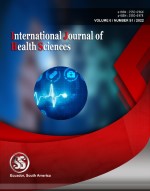
The use of green tea in the treatment of symptomatic uterine fibroids
2022 Apr 02 International Journal of Health Sciences Badawy A, Shady NW, Maklad SMA, Ait-Allah AS
Randomised Controlled Trial EGCGGreen tea extract, specifically epigallocatechin gallate, can inhibit tumor growth and enhance the quality of life in women suffering from uterine fibroids.

Dietary Natural Compounds and Vitamins as Potential Cofactors in Uterine Fibroids Growth and Development
2022 Feb 09 Nutrients Szydłowska I, Nawrocka-Rutkowska J, Brodowska A, Marciniak A, Starczewski A, Szczuko M
Using natural compounds in treatment of UFs appears to be a worthwhile endeavor. Natural compounds present as an alternative route in UF treatment, especially in patients with contraindications for hormonal therapy. In women treated conventionally, natural compounds can strengthen therapeutic effects.
Review Article VitaminsResearch insights are moderated by the Research Hub team and offer an at-a-glance overview of interesting research findings.

2023 Nutrients
Green tea helps alleviate symptoms in multiple benign gynecological disorders, primarily due to a compound called Epigallocatechin-3-gallate.
Review Article Green Tea Period Pain
Green Tea and Benign Gynecologic Disorders: A New Trick for An Old Beverage?
Hazimeh D, Massoud G, Parish M, Singh B, Segars J, Islam MS

2023 Nutrients
Epigallocatechin gallate (EGCG), a green tea component, showed potential in treating uterine fibroids and associated infertility without causing liver toxicity or folate deficiency.
Cohort Study EGCG Green Tea
Assessing the Hepatic Safety of Epigallocatechin Gallate (EGCG) in Reproductive-Aged Women
Siblini H, Al-Hendy A, Segars J, González F, Taylor HS, Singh B, et al.

2022 International Journal of Health Sciences
Green tea extract, specifically epigallocatechin gallate, can inhibit tumor growth and enhance the quality of life in women suffering from uterine fibroids.
Randomised Controlled Trial EGCG
The use of green tea in the treatment of symptomatic uterine fibroids
Badawy A, Shady NW, Maklad SMA, Ait-Allah AS
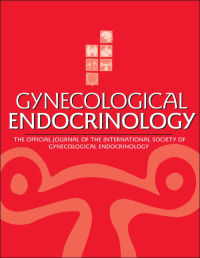
2021 Gynecological Endocrinology
Simultaneous administration of vitamin D and Epigallocatechin gallate significantly reduces the size of uterine fibroids in premenopausal women, and decreases menstrual flow duration.
Clinical Study
Vitamin D and green tea extracts for the treatment of uterine fibroids in late reproductive life: a pilot, prospective, daily-diary based study
Grandi G, Del Savio MC, Melotti C, Feliciello L, Facchinetti F
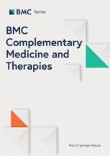
2014 BMC Complementary Medicine and Therapies
Guizhi Fuling formula shows potential in treating uterine fibroids.
Systematic Review
Chinese herbal medicine Guizhi Fuling Formula for treatment of uterine fibroids: a systematic review of randomised clinical trials
Chen NN, Han M, Yang H, Yang GY, Wang YY, Wu XK, et al.
Review Articles
Review articles summarise and critically evaluate the current state of research on a specific topic or field by synthesising multiple primary research studies.

Green Tea and Benign Gynecologic Disorders: A New Trick for An Old Beverage?
2023 Mar 16 Nutrients Hazimeh D, Massoud G, Parish M, Singh B, Segars J, Islam MS
Review Article Green Tea Period PainGreen tea helps alleviate symptoms in multiple benign gynecological disorders, primarily due to a compound called Epigallocatechin-3-gallate.

Dietary Natural Compounds and Vitamins as Potential Cofactors in Uterine Fibroids Growth and Development
2022 Feb 09 Nutrients Szydłowska I, Nawrocka-Rutkowska J, Brodowska A, Marciniak A, Starczewski A, Szczuko M
Using natural compounds in treatment of UFs appears to be a worthwhile endeavor. Natural compounds present as an alternative route in UF treatment, especially in patients with contraindications for hormonal therapy. In women treated conventionally, natural compounds can strengthen therapeutic effects.
Review Article Vitamins
Chinese herbal medicine Guizhi Fuling Formula for treatment of uterine fibroids: a systematic review of randomised clinical trials
2014 Jan 02 BMC Complementary Medicine and Therapies Chen NN, Han M, Yang H, Yang GY, Wang YY, Wu XK, et al.
Systematic ReviewGuizhi Fuling formula shows potential in treating uterine fibroids.

The use of acupuncture for managing gynaecologic conditions: An overview of systematic reviews
2011 Dec 1 Maturitas Kang, H.-S., Jeong, D., Kim, D.-I., et al.
There is no convincing evidence of the efficacy of acupuncture except for specific conditions, which include acupuncture administered with embryo transfer to improve the outcome of in vitro fertilisation and acupuncture for the management of chemotherapy-induced nausea and vomiting. There is a need for high-quality RCTs, comprehensive SRs and meta-analyses to provide convincing evidence of the effectiveness of acupuncture. Moreover, understudied conditions such as uterine fibroids and PCOS deserve further study.
Systematic Review Women's HealthClinical Trials
Clinical trials are research studies that involve people and are conducted to evaluate the safety and efficacy of new treatments or interventions, such as drugs, medical devices, or behavioural therapies.

The use of green tea in the treatment of symptomatic uterine fibroids
2022 Apr 02 International Journal of Health Sciences Badawy A, Shady NW, Maklad SMA, Ait-Allah AS
Randomised Controlled Trial EGCGGreen tea extract, specifically epigallocatechin gallate, can inhibit tumor growth and enhance the quality of life in women suffering from uterine fibroids.
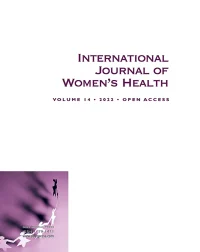
Treatment of symptomatic uterine fibroids with green tea extract: a pilot randomized controlled clinical study
2013 Aug 07 International Journal of Women's Health Roshdy E, Rajaratnam V, Maitra S, Sabry M, Ait Allah AS, Al-Hendy A
Randomised Controlled Trial Uterine Fibroids EGCGGreen tea extract has shown promising results in reducing uterine fibroid volume, fibroid-related symptoms, and improving quality of life in women with symptomatic uterine fibroids.
Study Protocols
Published study protocols are detailed plans that outline the objectives, methodology, statistical analyses, and organisation of a research study that have been made publicly available for others to review and use as a reference.
Presentation Slides

Review Article
Green tea helps alleviate symptoms in multiple benign gynecological disorders, primarily due to a compound called Epigallocatechin-3-gallate.
Hazimeh D, Massoud G, Parish M, Singh B, Segars J, Islam MS

Cohort Study
Epigallocatechin gallate (EGCG), a green tea component, showed potential in treating uterine fibroids and associated infertility without causing liver toxicity or folate deficiency.
Siblini H, Al-Hendy A, Segars J, González F, Taylor HS, Singh B, Flaminia A, Flores VA, Christman GM, Huang H, Johnson JJ, Zhang H

Randomised Controlled Trial
Green tea extract, specifically epigallocatechin gallate, can inhibit tumor growth and enhance the quality of life in women suffering from uterine fibroids.
Badawy A, Shady NW, Maklad SMA, Ait-Allah AS

Clinical Study
Simultaneous administration of vitamin D and Epigallocatechin gallate significantly reduces the size of uterine fibroids in premenopausal women, and decreases menstrual flow duration.
Grandi G, Del Savio MC, Melotti C, Feliciello L, Facchinetti F

Systematic Review
Guizhi Fuling formula shows potential in treating uterine fibroids.
Chen NN, Han M, Yang H, Yang GY, Wang YY, Wu XK, Liu JP

Randomised Controlled Trial
Green tea extract has shown promising results in reducing uterine fibroid volume, fibroid-related symptoms, and improving quality of life in women with symptomatic uterine fibroids.
Roshdy E, Rajaratnam V, Maitra S, Sabry M, Ait Allah AS, Al-Hendy A
Executive Summary
Write an executive summary in the form of a blog article on the topic of "Research into Chinese medicine treatment for Uterine Fibroids" summarising the research below and using language that can be easily understood by patients and avoiding medical jargon using a professional and caring tone of voice.
Write an executive summary in the form of a blog article on the topic of "Researched Chinese medicine treatments for Uterine Fibroids" summarising the research below in an objective and easy to understand way, and using language that can be easily understood by patients. Group the article into Chinese medicine treatments first, followed by nutrition and other treatments. Avoid using medical jargon and use a professional and caring tone of voice.
Write me a concise but easy to understand executive summary on the topic of "Chinese medicine treatments for Uterine Fibroids" based on the following research that I will give you. Your summary should be 2 paragraphs long in Australian English spelling and include references to the studies.
A Review Article published in 2023 in the journal Nutrients found that Green tea helps alleviate symptoms in multiple benign gynecological disorders, primarily due to a compound called Epigallocatechin-3-gallate. The paper reviews the role of the compound Epigallocatechin-3-gallate found in green tea, and its effects on various benign gynecological conditions. The compound is noted for its antioxidant and prooxidant qualities, allowing it to interact with multiple cellular pathways that are crucial for disease pathogenesis. The studied conditions include uterine fibroids, endometriosis, dysmenorrhea, adenomyosis, menopause, and polycystic ovary syndrome. The research accounts for the specific mechanisms through which the compound might affect each condition, such as anti-fibrotic, anti-angiogenic, and pro-apoptotic mechanisms. The results suggest that green tea consumption can lead to improved symptom management in these disorders. It was found to lessen the intensity of symptoms associated with uterine fibroids and endometriosis, by invoking anti-fibrotic, anti-angiogenic, and pro-apoptotic mechanisms. It also helped manage pain linked with dysmenorrhea and adenomyosis through reducing uterine contractility and widely felt pain. Additionally, it showed efficacy in weight and osteoporosis control during menopause, and showed potential benefits in managing polycystic ovary syndrome. However, claims regarding its influence on fertility were deemed controversial.
A Cohort Study published in 2023 in the journal Nutrients found that Epigallocatechin gallate (EGCG), a green tea component, showed potential in treating uterine fibroids and associated infertility without causing liver toxicity or folate deficiency. The study involved the pre-testing of a green tea substance known as Epigallocatechin gallate (EGCG) on a cohort of premenopausal women, aged 18 to 40, with and without uterine fibroids, in order to evaluate its safety. The subjects were randomized into three groups, each receiving different treatments. One group took just a daily dose of 800 mg of EGCG, one group combined this EGCG dose with 100 mg of Clomiphene citrate for five days, and the third group combined it with 5 mg of Letrozole for the same period. The results showed that none of the subjects displayed signs of drug-induced liver injury, and all had normal serum folate levels. Hence, the findings suggest that the daily intake of 800mg of EGCG, whether consumed alone or in combination with Clomiphene citrate or Letrozole for five days, is well-tolerated and not related to any liver toxicity or folate deficiency in women of reproductive age.
A Randomised Controlled Trial published in 2022 in the journal International Journal of Health Sciences found that Green tea extract, specifically epigallocatechin gallate, can inhibit tumor growth and enhance the quality of life in women suffering from uterine fibroids. A total of 75 reproductive-age women with symptomatic uterine fibroids were included in a prospective, randomized control trial. The selection of participants for either group, those receiving 900 mg of green tea extract or those receiving symptomatic treatment, was done via a random, blind method using sealed envelopes. This trial took place over a span of 4 months and the overall study lasted around 3 years. The results of the study showcased the potency of green tea extract, particularly EGCG, with special regard to its anticancer properties. These manifested as anti-inflammatory, antiproliferative, and antioxidant effects. It was found that the administration of EGCG managed to influence tumor growth pathways, indicating its efficacy in dealing with uterine fibroids. Moreover, another significant progression was observed in the quality of life for the women partaking in this trial. It was confirmed that the use of EGCG could bring about an overall improvement in the living conditions of these women, contributing towards a better, healthier life amidst the struggle with their condition.
A Clinical Study published in 2021 in the journal Gynecological Endocrinology found that Simultaneous administration of vitamin D and Epigallocatechin gallate significantly reduces the size of uterine fibroids in premenopausal women, and decreases menstrual flow duration. In this study, 16 premenopausal women with uterine fibroids of varying sizes aged over 40 years old were given doses of Epigallocatechin gallate, Vitamin B6 and Vitamin D daily for 90 days. The women were selected based on specific criteria including their fibroid size and lack of other causes for abnormal uterine bleeding. Each woman kept a detailed daily diary recording details about their bleeding and pelvic pain. The analysis of the data revealed that there was a noteworthy decrease in both the average size of fibroids for each woman and the size of individual fibroids. This effect was especially pronounced in women with predominantly intramural fibroids in comparison to subserosal fibroids. While menstrual cycle duration and intensity did not change, the length of menstrual flow was decreased. Uterine and ovarian volume as well as endometrial thickness did not exhibit any significant changes. The treatment was generally highly satisfactory to the participants, with no adverse effects reported.
A Systematic Review published in 2014 in the journal BMC Complementary Medicine and Therapies found that Guizhi Fuling formula shows potential in treating uterine fibroids. This comprehensive review analyzed 21 trials (including three meta-analyses and eight individual trials) regarding the effectiveness of Guizhi Fuling Formula combined with mifepristone in treating uterine fibroids. The results indicated potential benefits in reducing fibroid volume and uterine size compared to mifepristone alone. However, the overall methodological quality of the included trials was deemed poor, with issues such as unclear randomization procedures and lack of blinding. Further high-quality clinical trials with larger sample sizes are recommended to provide more conclusive evidence on the efficacy of this treatment approach for uterine fibroids.
A Randomised Controlled Trial published in 2013 in the journal International Journal of Women's Health found that Green tea extract has shown promising results in reducing uterine fibroid volume, fibroid-related symptoms, and improving quality of life in women with symptomatic uterine fibroids. The research examined the effect of green tea extract (epigallocatechin gallate, EGCG) on uterine fibroid (UF) management. In this randomized, double-blinded, placebo-controlled study, 39 women aged 18-50 presenting with symptomatic UF were enlisted. Participants were confirmed as eligible through transvaginal ultrasonography that showed at least one 2cm³ or larger fibroid lesion. They were split into two groups: the focus group took a daily oral intake of 800 mg of green tea extract, while the control group followed the same regimen with 800 mg of brown rice (placebo). The experiment period ran for four months. At the end, UF volume changes were also measured through transvaginal ultrasonography for comparison. The outcome revealed divergent changes in UF volume and health-related quality of life (HRQL) among participants. In the placebo group, an increase in fibroid volume was noticed. Contrarily, significant reductions in fibroid volume and symptom severity were recorded in women who took green tea extract. This group also witnessed an improvement in HRQL contrasted to the control group. Additionally, anemia improved in the EGCG treatment group, with no adverse effects or endometrial anomalies reported in either group.
Moderation Tools
Topic
Sign In
Users not signed in are limited to viewing the 5 most recent items of content.